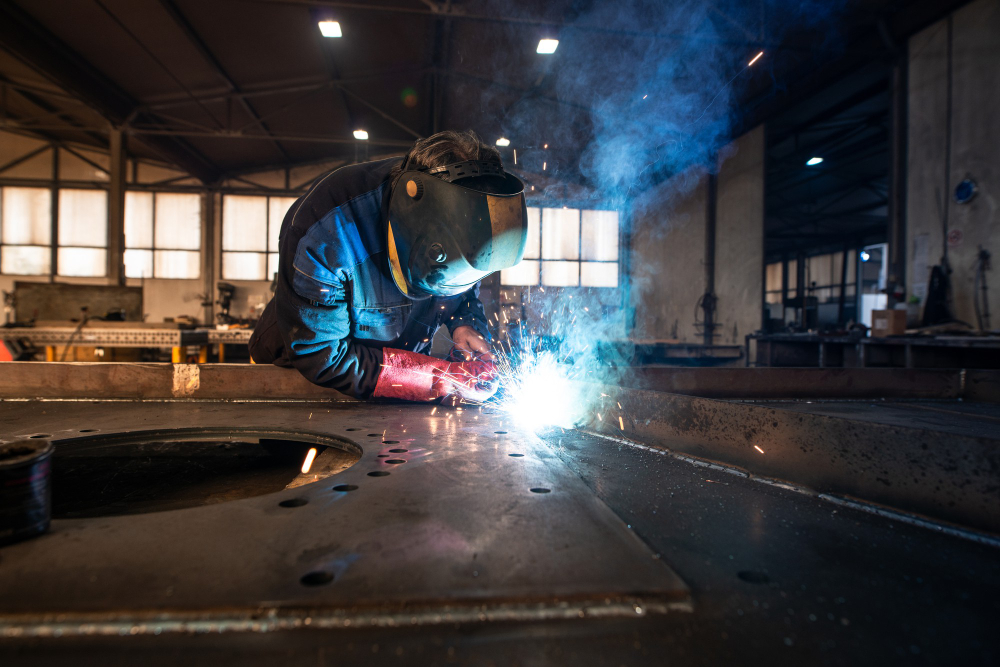Very significant changes are being seen in the metal fabrication industry within the Philippines. The demand for high-value, customized metal components in the industry of metal fabrication in the Philippines is increasing. Manufacturers are embracing innovative technologies and sustainable practices in order to meet this demand and stand competitively. With such techniques, there is an ongoing improvement in efficiency, costs, and product quality.
Automation and Advanced Technologies
One of the most noticed innovations in metal fabrication is the adoption of more automation and robotics. Companies invested in CNC (computer numerical control) machines that will shape or cut metals with a certain accuracy, high precision without much human labor, which makes the productions more efficient. The advanced technologies improve on the precision of the products and allow the coming into being of complex geometries which were impossible to manufacture beforehand.
The use of laser cutting and 3D printing has, of late, changed the industry. Such technologically advanced options can enable detailed designs and quicker production, putting manufacturers a step ahead in an increasingly competitive market. Again, as investments in industrial projects and technology improvements expand in the Philippines, an underlying trend to modernize is apparent in that market.
Sustainable Manufacturing Practices
Climate issues become prominent and Philippine metal fabricators take the lead with environmentally friendly practices. They have especially adapted the use of recycled materials, primarily steel because it can be recycled infinitely. This does away with virgin material extraction, therefore minimizing all of the attached environmental impacts of virgin material extraction. Companies such as SteelAsia focus on the use of technologies that decrease their greenhouse gas emissions as well as enhance production capabilities.
Not only will the companies be using materials in an eco-friendly way, but they will also start adopting other sustainable practices, such as waste reduction, energy efficiency, and being powered by renewable sources, in manufacturing. Environmental regulations like the Philippine Clean Air Act motivate metal fabricators to be proactive about sustainable manufacturing while innovation shows its side.
Quality Control and Customization
High quality standards are usually provided for in the fabrication industry because they ensure that there is reliability in product delivery and, accordingly, the building of customer confidence. These manufacturers in the Philippines can uphold a quality management system like those companies which have acquired ISO certifications like ISO 9001 by focusing on establishing a quality standard of the whole production process. Inspections and audits are often performed, such as NDT, at every point in the fabrication process.
Increasing demand for customized metal components The main customers for customized metal components are such industries as the automotive and aerospace, whose performance criteria do not accept one-size-fits-all. The capacity to provide customized solutions allows manufacturers to address the exclusive needs of their clients, distinguish themselves from competitors, and gain the loyalty of their customers. Some highly innovative techniques applied to custom projects are sometimes successful and include specialized machinery or special architectural designs adapted to a wide variety of needs.
Challenges and Opportunities
After embracing innovation, the metal fabrication in the country has a lot to cover. The biggest challenge of the industry is lacking skilled manpower on board with advanced fabrication techniques. Manufacturers have mainly complained that workers who know how to handle and maintain the latest technologies are hard to find, and thus there must be training programs for constant professional update.
Economic uncertainty also significantly affects the investment decision regarding new technology and equipment upgradation. Fluctuating economic conditions do not make commitment towards innovation easy for manufacturers. However, those who can cope with the situation by investing into requisite new technology or equipment manage to take an edge over others and hence secure their long-term future.
Supply chain disruptions, most especially post the COVID-19 pandemic, have also affected material availability and project timelines. Manufacturers have been focused on building resilient supply chains that can respond to sudden shocks and pressures, thereby ensuring projects deliver in time and within budget.
Future Outlook
As the metal fabrication industry in the Philippines continues to evolve, the future looks bright for innovative techniques and sustainable practices. Manufacturers are poised to take advantage of emerging technologies, such as advanced robotics and artificial intelligence, to further streamline their processes and enhance product quality.
The growing demand for customized solutions will drive manufacturers to develop even more specialized capabilities, catering to the unique needs of various industries. Collaboration between manufacturers, research institutions, and government agencies will be crucial in fostering innovation and ensuring that the industry remains competitive on a global scale.
Moreover, the commitment to sustainability will only intensify, with manufacturers exploring new ways to reduce their environmental impact and contribute to a greener future. The adoption of renewable energy sources, such as solar power, and the development of closed-loop recycling systems will become increasingly important in the years to come.
Key Takeaway
Metal fabrication in the Philippines is undergoing a transformative period, driven by innovative techniques and sustainable practices. By embracing automation, advanced technologies, and eco-friendly materials, manufacturers are enhancing efficiency, reducing costs, and improving product quality. As the industry continues to evolve, it will be essential for manufacturers to invest in their workforce, build resilient supply chains, and collaborate with stakeholders to drive innovation and maintain a competitive edge in the global market.
